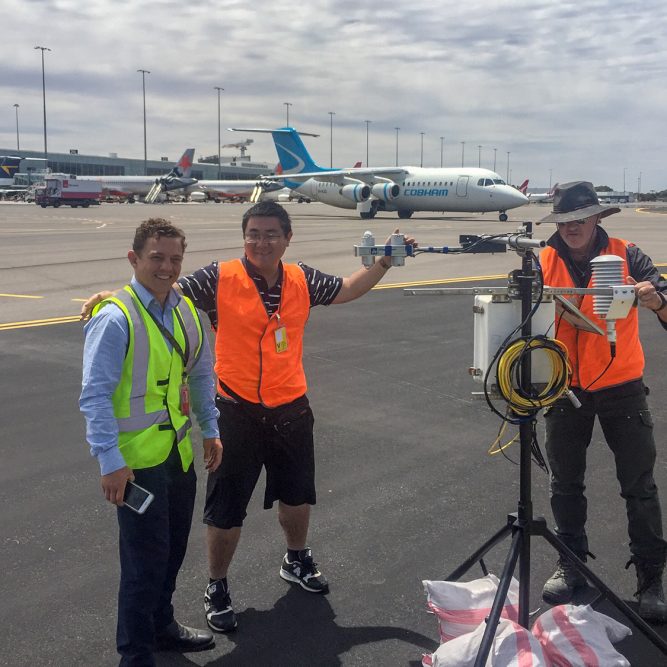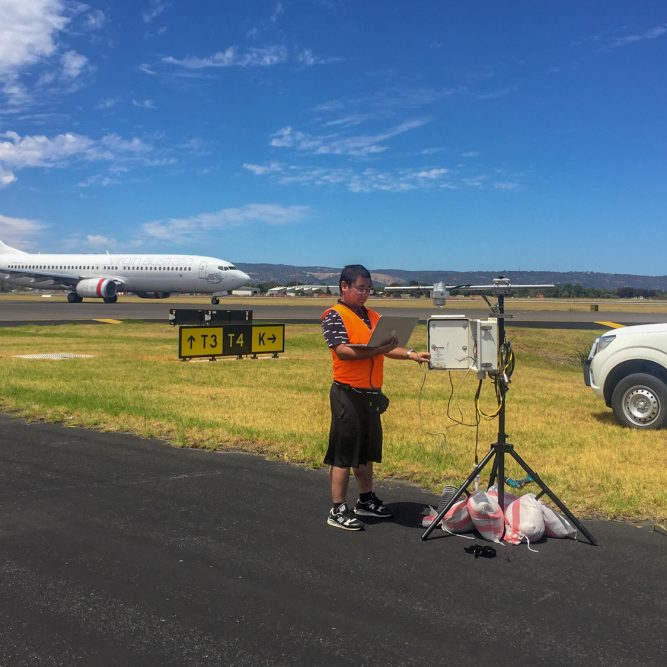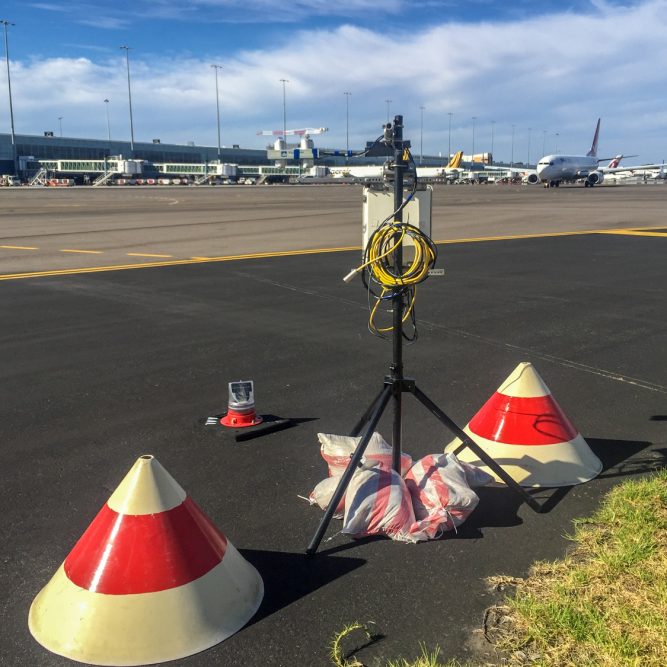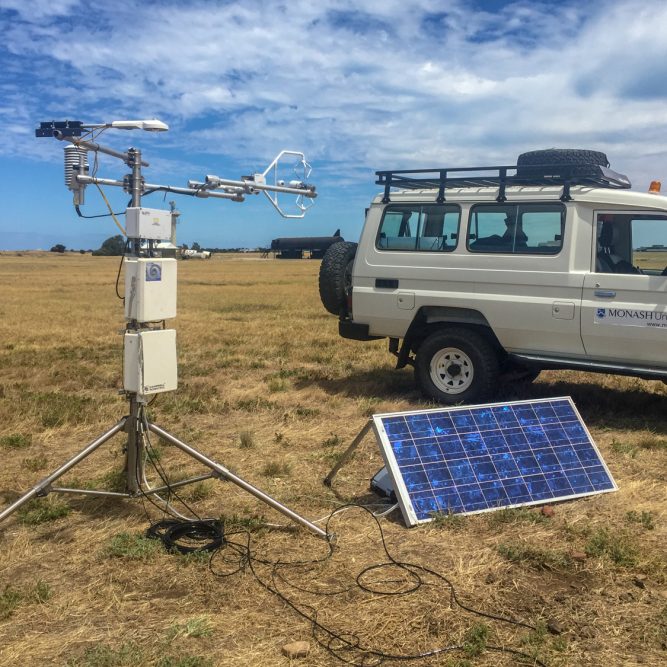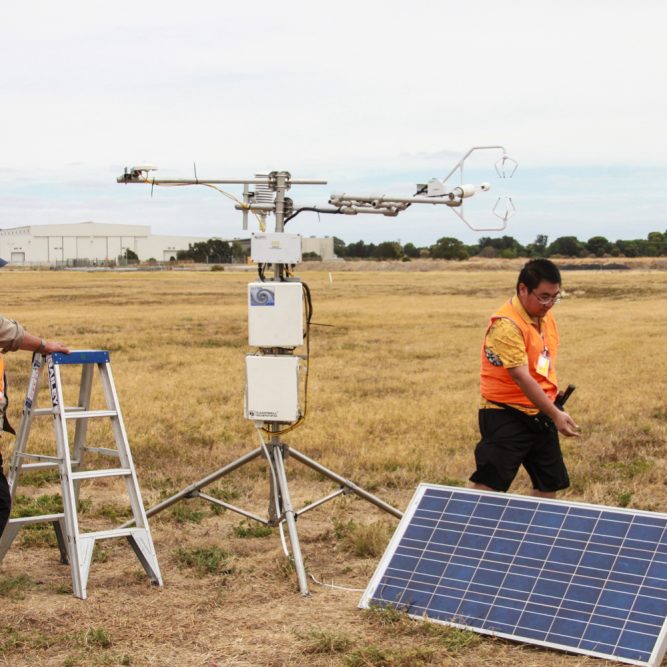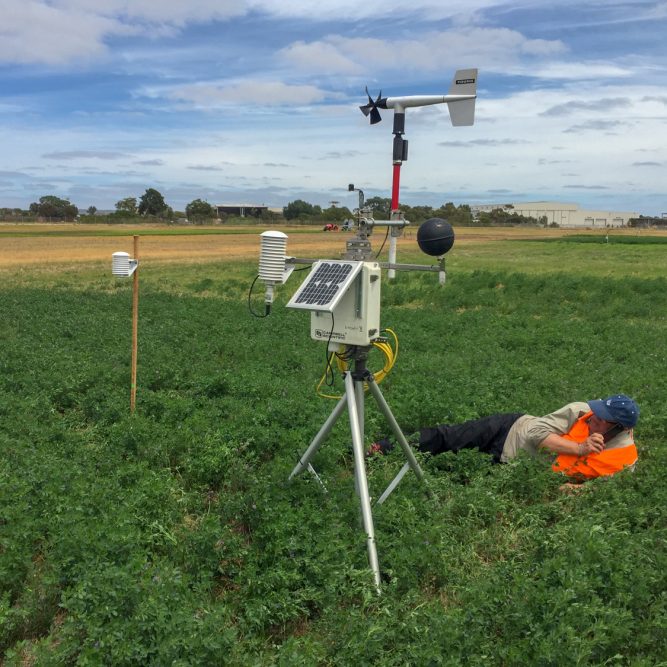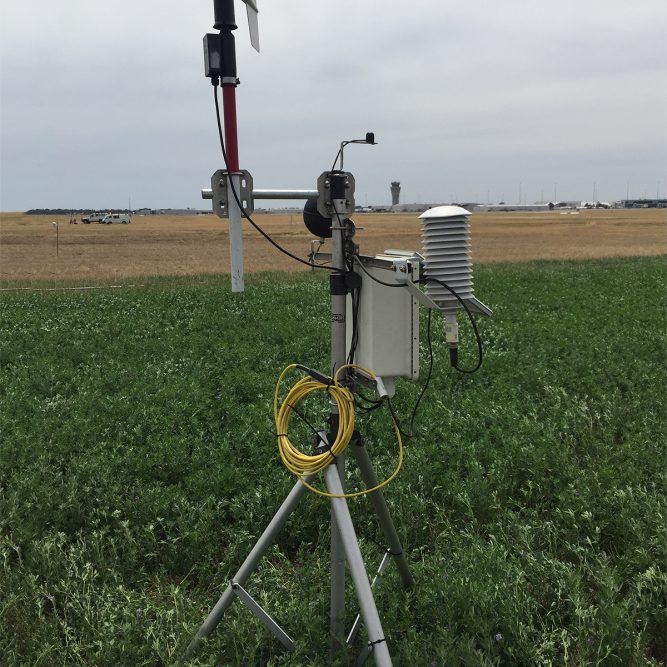Irrigation trialled for cooling Adelaide Airport
SA Water and Adelaide Airport commenced an irrigation trial in 2015, with the idea to use stormwater to irrigate the flight strips to maintain appropriate vegetative cover and to assess the possibility of expanding irrigation to the large buffers around the airport. SA Water benefits from the sale of non-potable water, but the real attraction was demonstrating the operational benefits of cooling the air around the airport. The potential benefits include reduced cooling costs within terminals, and reducing impacts of heat on aircraft and airport operations (reduced restrictions on passenger numbers, freight and flights as well as improved aircraft performance during hot days).
Early results are promising—air temperatures over the irrigated area are lower than the unirrigated areas. So, SA Water and Adelaide Airport extended the scope of the trial, to examine whether the irrigated areas could be used for cropping, to determine the persistence of cooler air above and downwind of the irrigated area, and to consider the other operational benefits of cooling the air around airports.
Making the large buffers around airports productive
Rather than just maintaining the airfield, Adelaide Airport and SA Water wanted to investigate if it was possible to use the land productively. One of the vegetation types trialled in the early stages was lucerne hay, which resulted in significantly cooler air temperatures above the trial sites than some other varieties.
Greg Ingleton (Manager Environmental Opportunities at SA Water) says, “Lucerne hay outperforms the other varieties we tested, including grasses such as tall fescue, couch or kikuyu”.
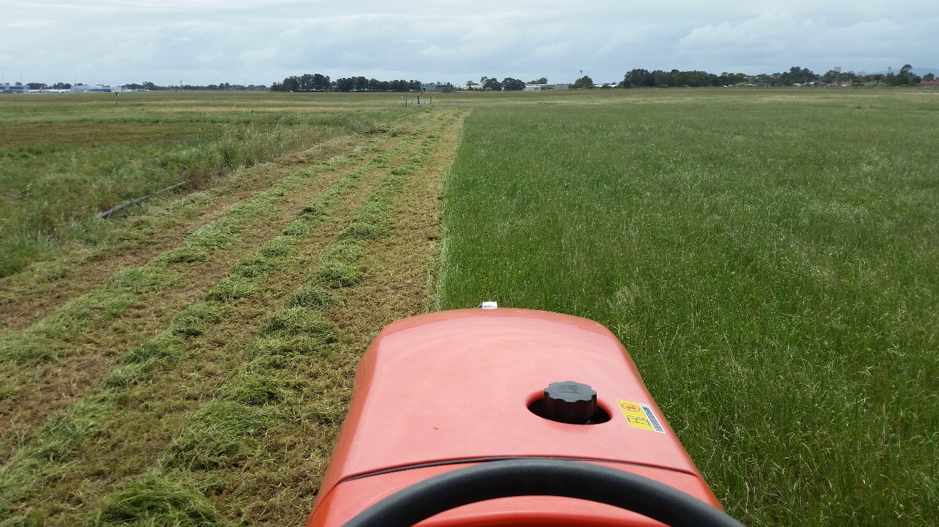
An additional advantage of lucerne hay is that it can be cropped, so SA Water and Adelaide Airport engaged economists to determine if lucerne could be used to recoup some of the irrigation and maintenance costs. Specifically, the economists extrapolated the costs and benefits of lucerne hay from the trial site to the wider 200ha area at Adelaide Airport, using a conservative and a very conservative scenario. The results showed a payback period of 7–12 years.
“These results gave us confidence that using airport buffers for cropping could be viable, compared with current maintenance”, said Greg. “And best of all, the cooling component is free.”
“Another key component of the trial is to minimising wildlife hazard”, Leigh Gapp (Senior Environmental Advisor at Adelaide Airport) said. “We are still assessing the performance of lucerne in relation to attracting bird activity. The initial results seem positive, but we need to increase the area of lucerne sown and continue monitoring bird activity at the site to confirm the preliminary results.”
Leigh added, “We have not seen an increase in the numbers of high risk species such as galahs, corellas and pigeons at the existing lucerne plots. The fact that it can be cut before flowering, insects can be managed and the growing height is in line with the internationally accepted ‘long grass policy’ has made it a good candidate for further research.”
Given these results, Greg says there may be opportunities to extend this cropping concept to other airports, both interstate and internationally.
Measuring the extent of cooling
As noted above, the early results from the trial showed air temperatures above the irrigated sites were lower than the air temperature above the unirrigated sites.
“Dry grass has virtually same thermal characteristics as concrete and asphalt”, explained Professor Nigel Tapper who is Professor of Environmental Science at Monash University and a climate scientist. “The trial shows lower temperatures over the trial areas, but we want to know if the temperature change persists from the trial area to the wider airport precinct (including the terminal), as well as the vertical extent of the cooling.”
To study this in more detail, Nigel’s team is expanding the trial’s temperatures observation points, both horizontally and vertically and is using an eddy-covariance system to directly measure the heat and moisture transport from the surface (that controls low-level heating and cooling). This demonstration site is part of the CRCWSC's Project D1.4 (learning through demonstration and integration).
The team will use these observations to:
- measure the persistence of the temperature changes associated with irrigation
- validate the results from environmental models
- run scenarios to determine optimal water use (that is, how much water is necessary to produce the best effect), for example, or how much of the airport precinct is required for cooling.
The team installed their equipment and began gathering observations in early February 2018 (see the slide show below, images courtesy of Jianming Qian).
Understanding the other benefits of cooling
Greg and Leigh are also keen to understand some of the other potential benefits of cooling airports, including reducing impacts of heat on aircraft and airport operations. Hot air is less dense, which affects the performance of engines and the capability of aircraft to generate lift. This, in turn, affects the length of the runway required as well as the passenger and or freight load that can be carried. High temperatures can result in decreased payloads, and extreme heat events can even result in cancelled flights, as was experienced Phoenix, Arizona last June.
Adelaide Airport and SA Water plan to further investigate the potential for local cooling to minimise the impacts to aircraft and airport operations.
You can find more information about the project and stay up to date with developments at the Adelaide Airport demonstration project web page.
